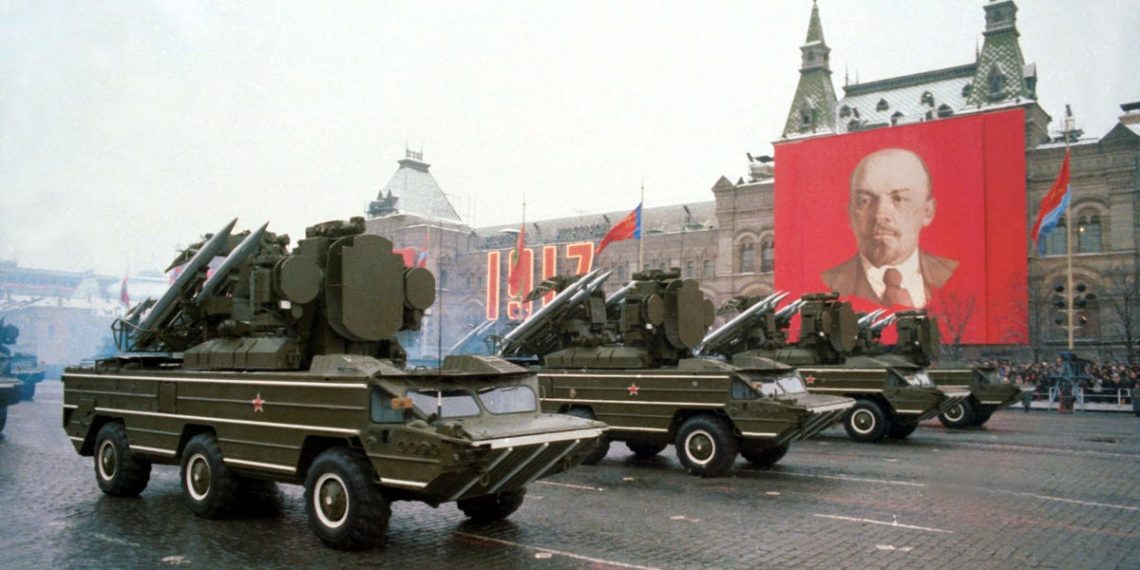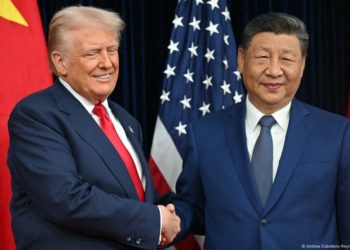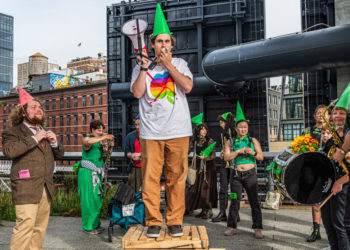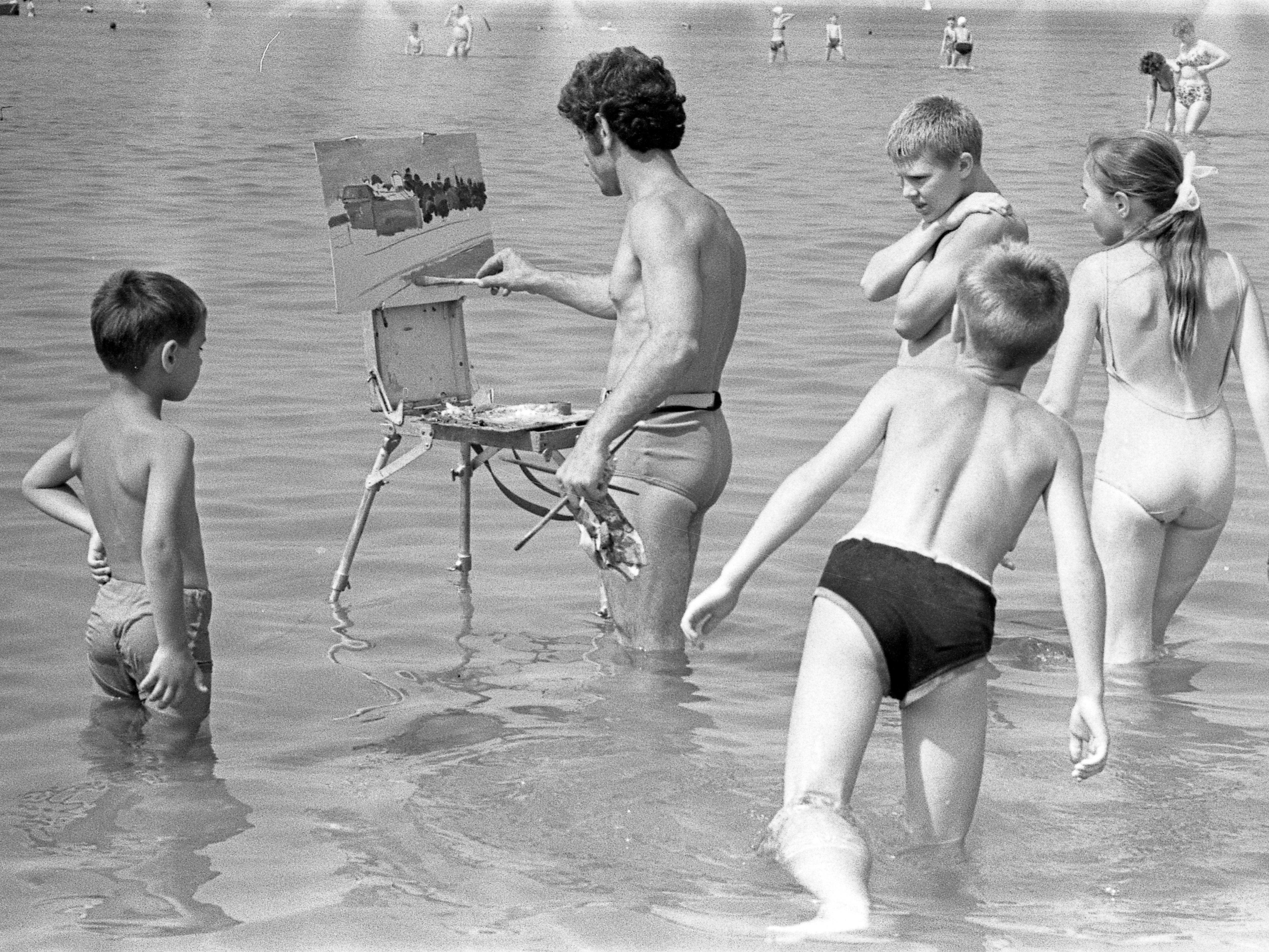
Vladimir Bogdanov/FotoSoyuz/Getty Images
The US and Russia might be trying to strengthen relations as President Donald Trump aims to end the war in Ukraine, but there was once a time when the two nations couldn’t be further apart.
During the Cold War, the Iron Curtain was a figurative and ideological wall — and eventually a physical one — that separated the Soviet Union from Western Europe after World War II.
Vintage photos provide a peek behind the curtain and show that, while members of the Soviet Union worked tirelessly to prove its power to the rest of the world, there was also time for music, shopping, and vacations in the sun.
Ahead of the meeting between Trump and Russian President Vladimir Putin on Friday, take a look back at how the Soviet Union once tried to distance itself from the US and its citizens from the influence of American culture.
The Iron Curtain was a figurative and political barrier that divided Europe.
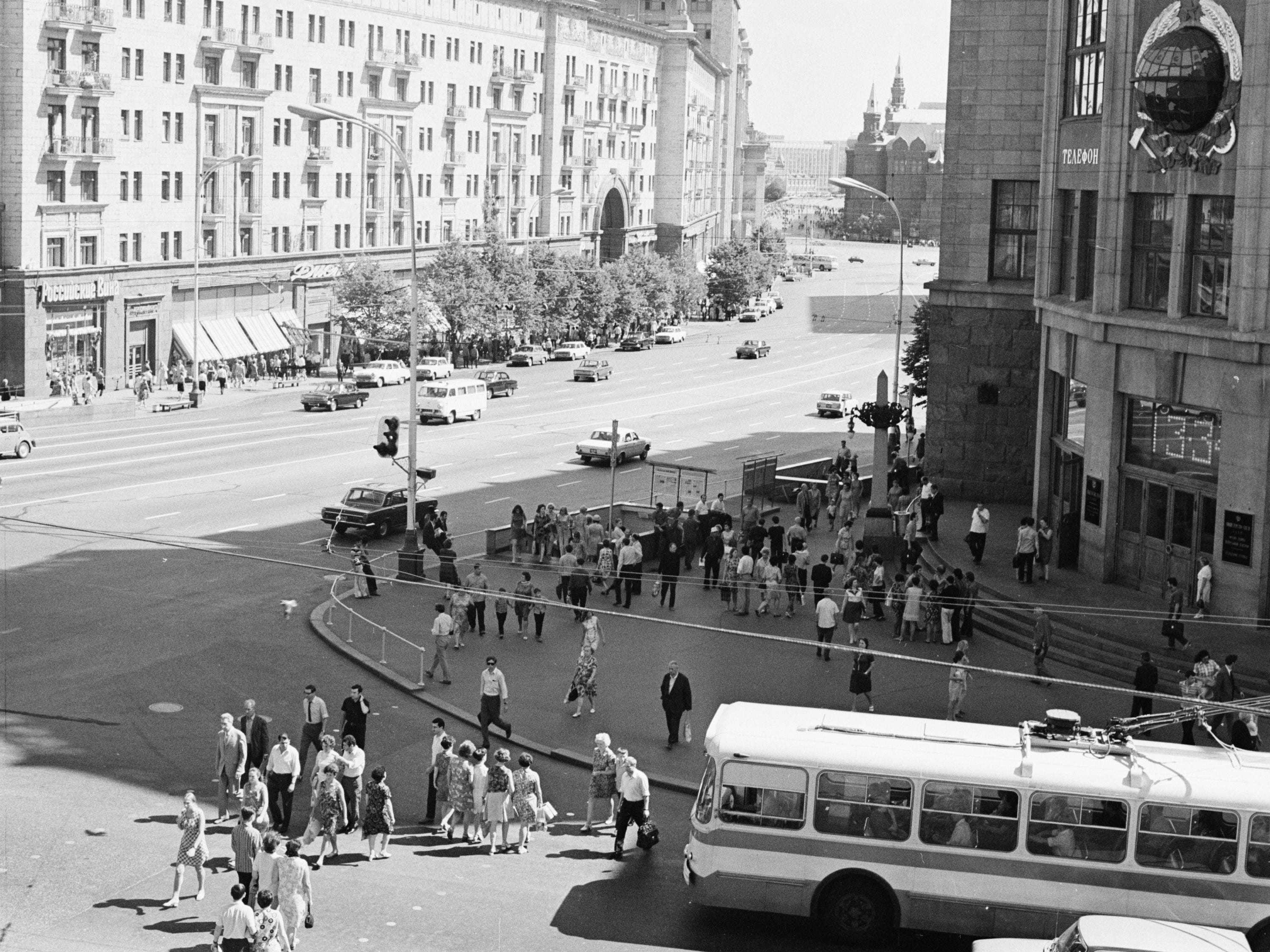
Sovfoto/Universal Images Group/Getty Images
The name, widely attributed to Winston Churchill, hinted that life in the USSR was secretive and very different from other Western, capitalist countries.
It sealed off the Soviet Union from Western countries.
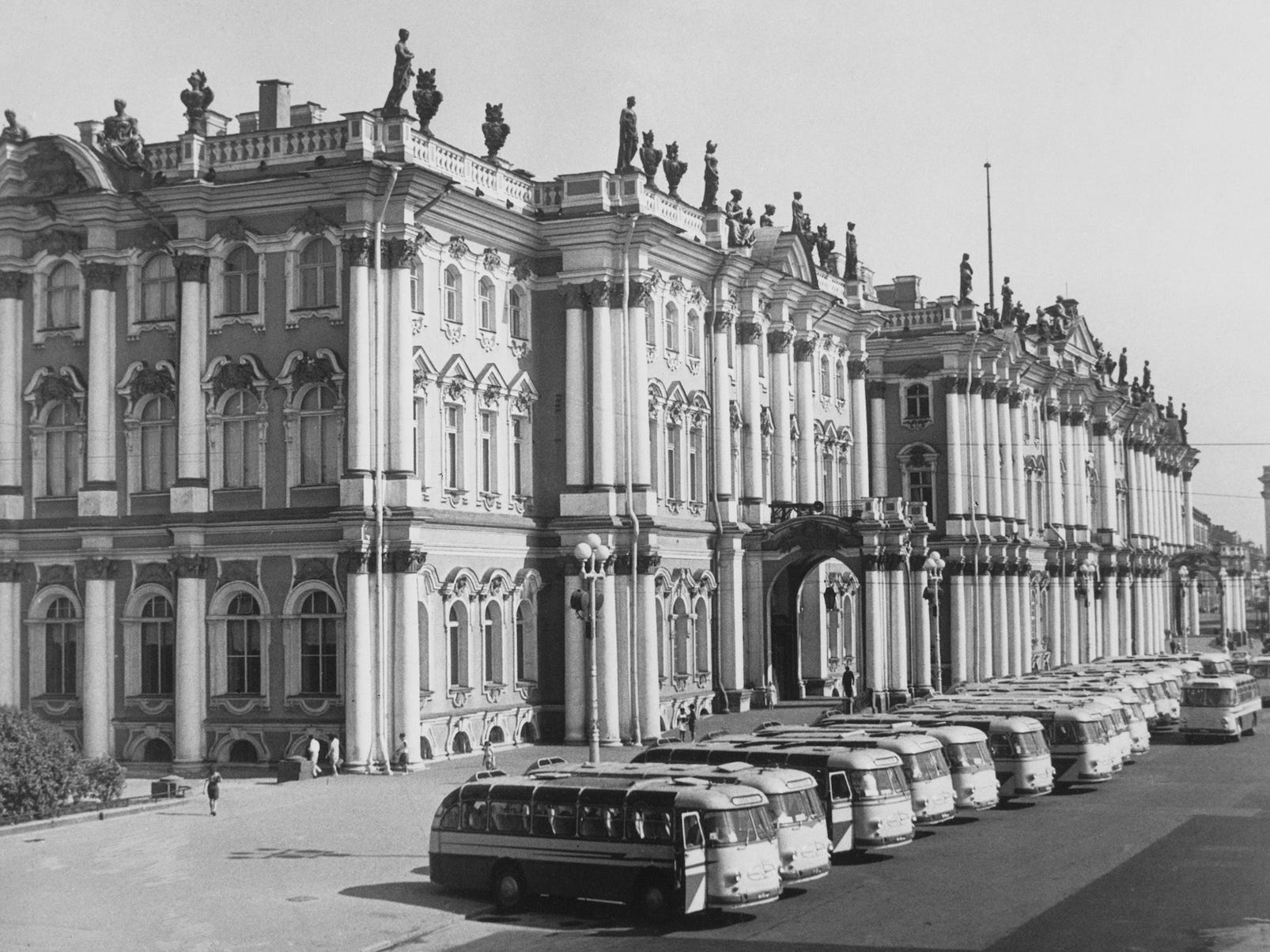
Bettmann/Getty Images
The Iron Curtain separated the Soviet Union from the US, Europe, and other Western states between the end of World War II and the end of the Cold War in 1991.
Life in the Soviet Union looked different before and after Joseph Stalin’s death.
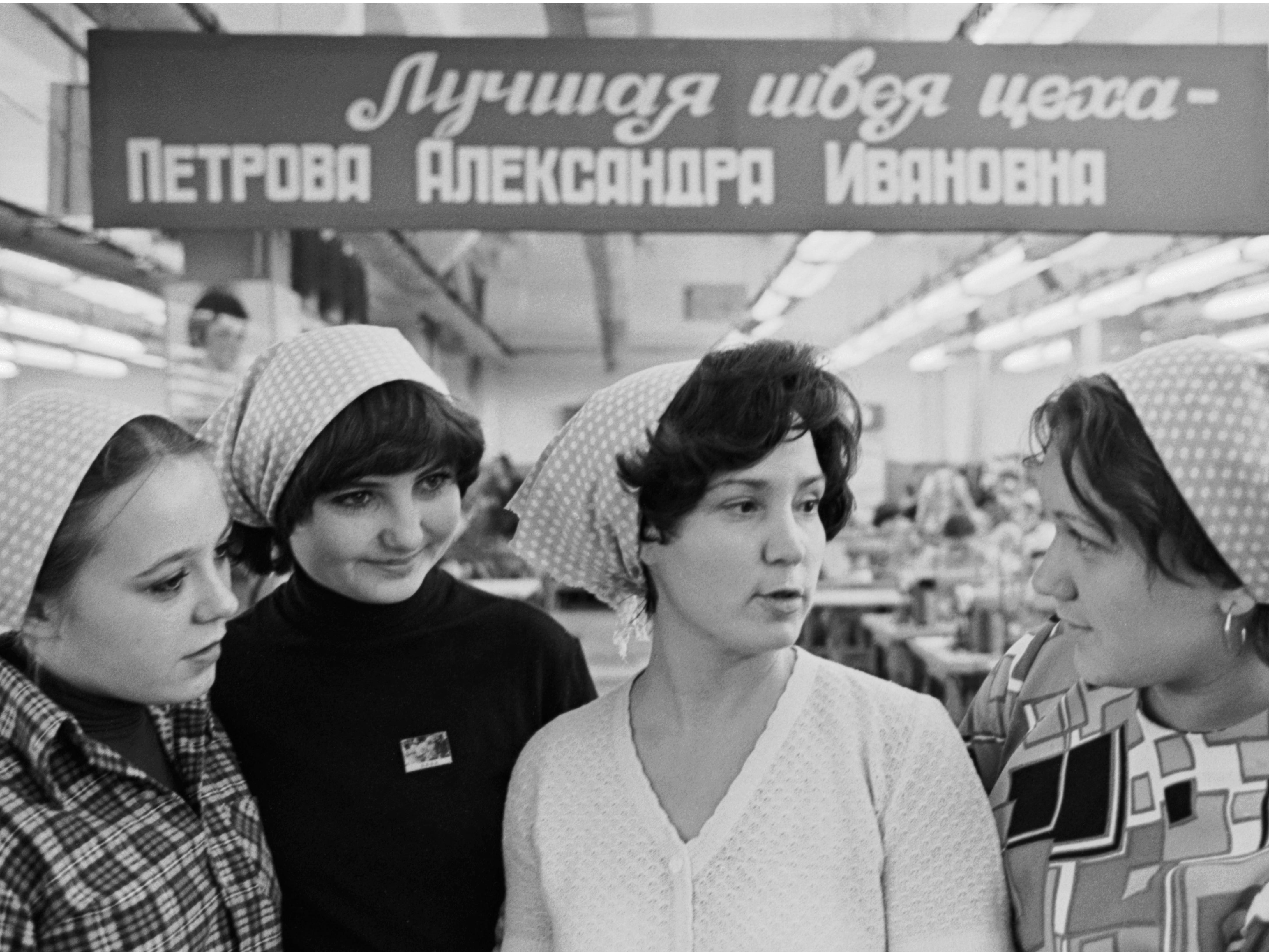
TASS/Getty Images
The Soviet Union was believed to be brutally restrictive, but after Joseph Stalin died in 1953, there were changes to everyday life.
After the building of the Berlin Wall, some Soviet citizens became more curious about American culture.
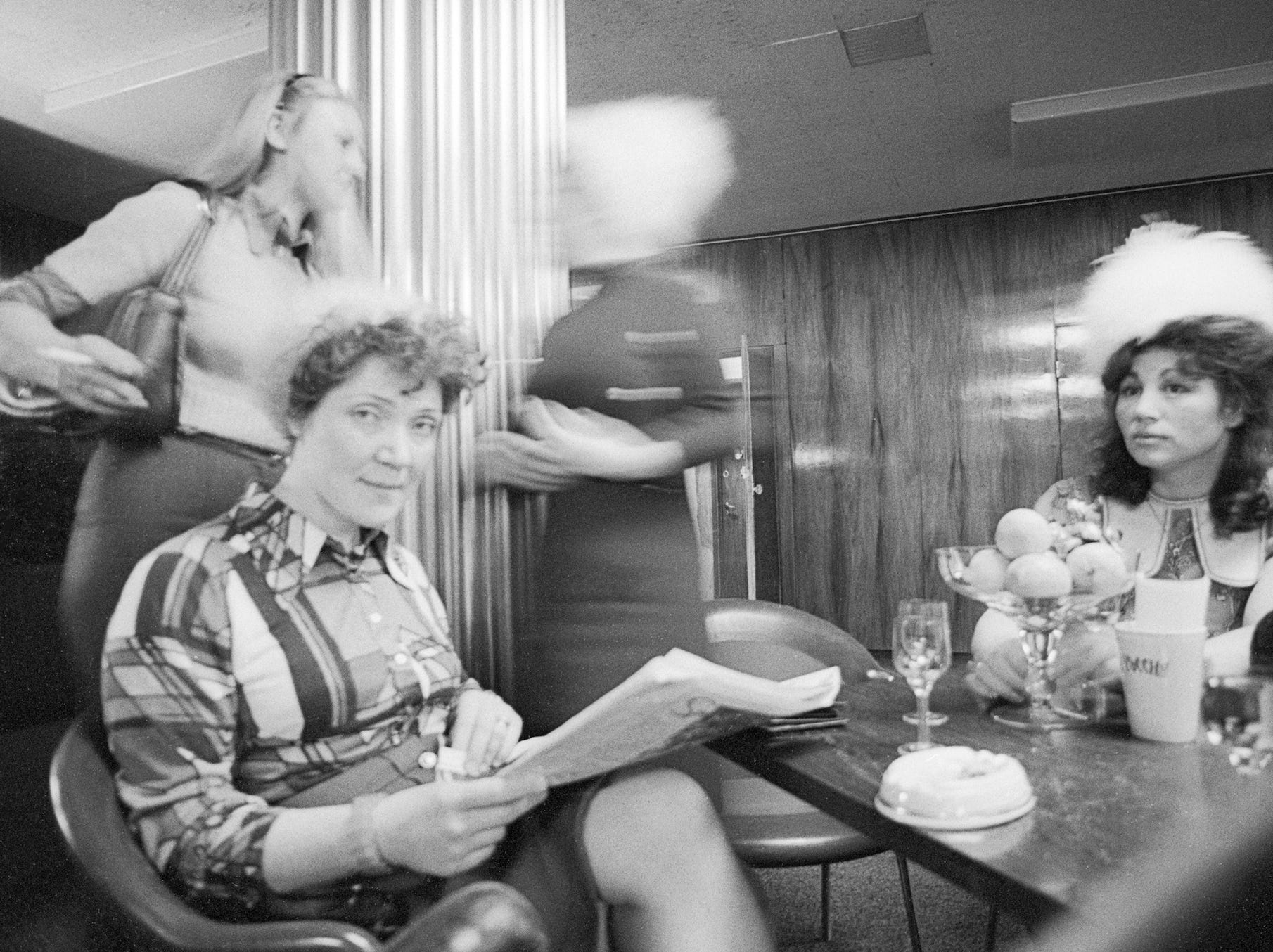
Michel ARTAULT/Gamma-Rapho via Getty Images
In 1961, the Berlin Wall was built, and a combination of curiosity and fascination with American culture began to build throughout the ’60s, ’70s, and ’80s, as reported by History.com
The US government used that curiosity as a tool.
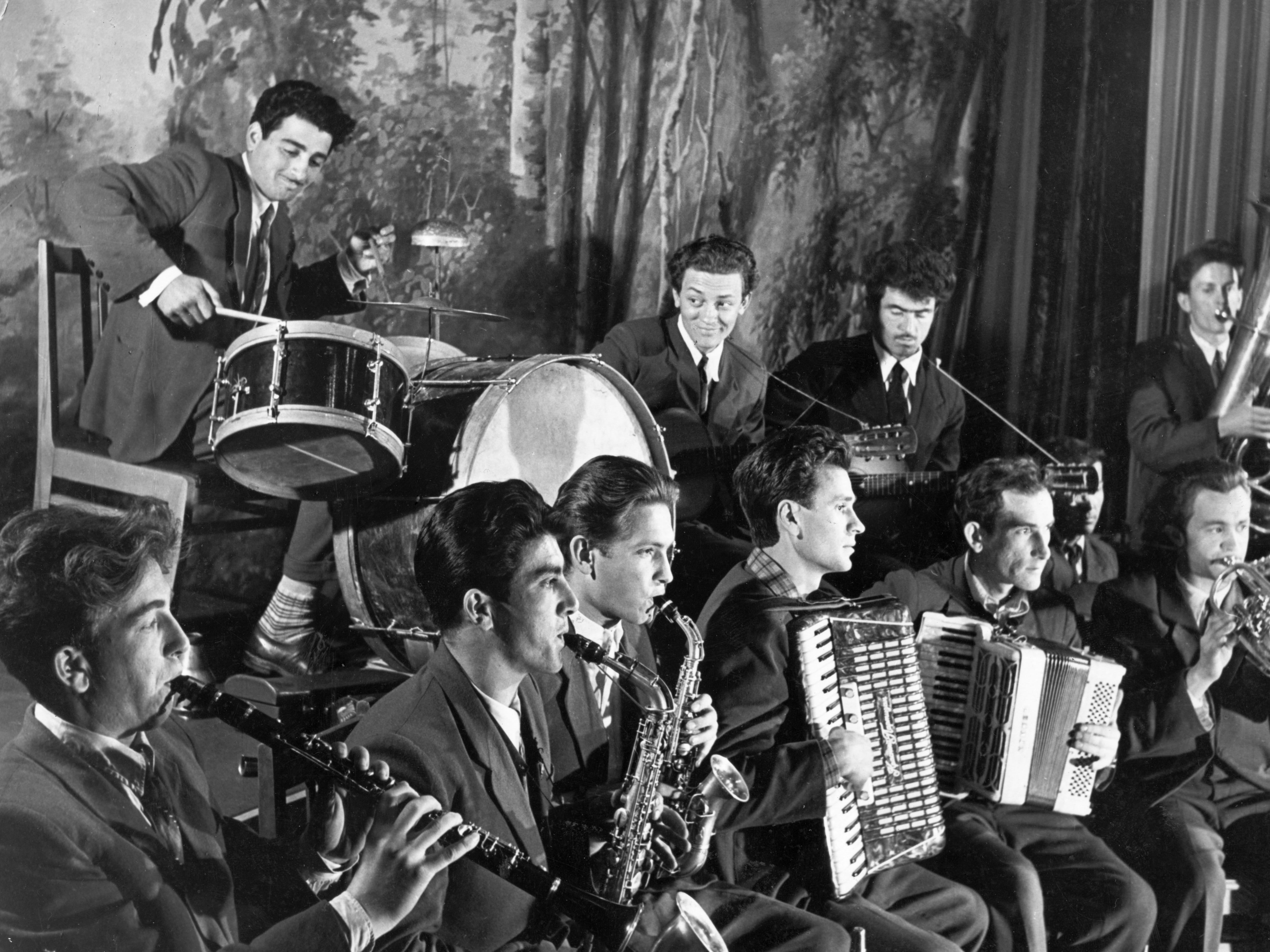
Sovfoto/Universal Images Group/Getty Images
Some of this fascination was fueled by the US State Department, which sent popular American music to Eastern Europe.
American cultural exports offered new forms of entertainment.
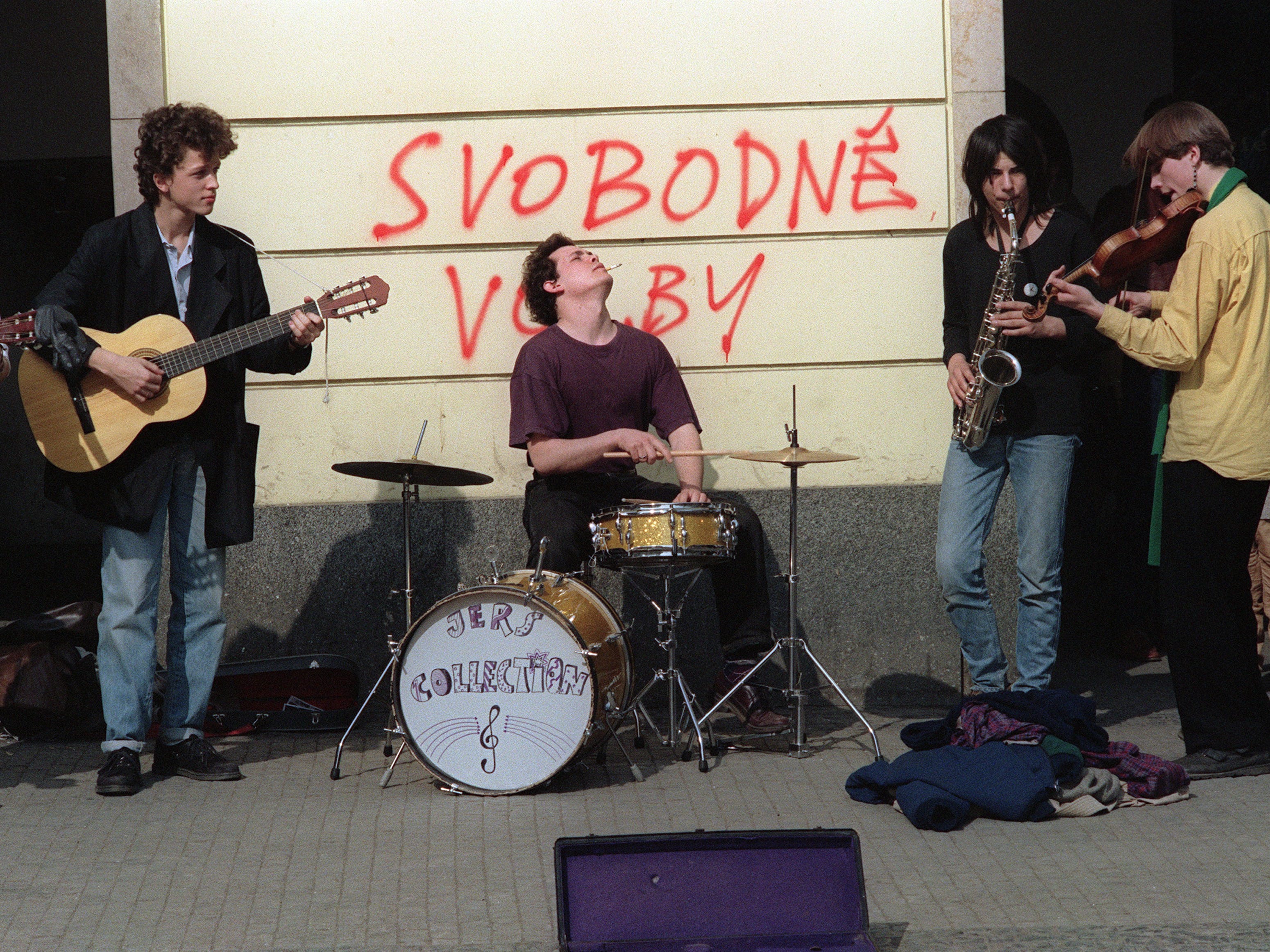
LUBOMIR KOTEK/AFP/Getty Images
Music like jazz gave people a chance to experiment with a new form of entertainment.
Shortly after, Soviet leaders began efforts to prevent Western culture from spreading.
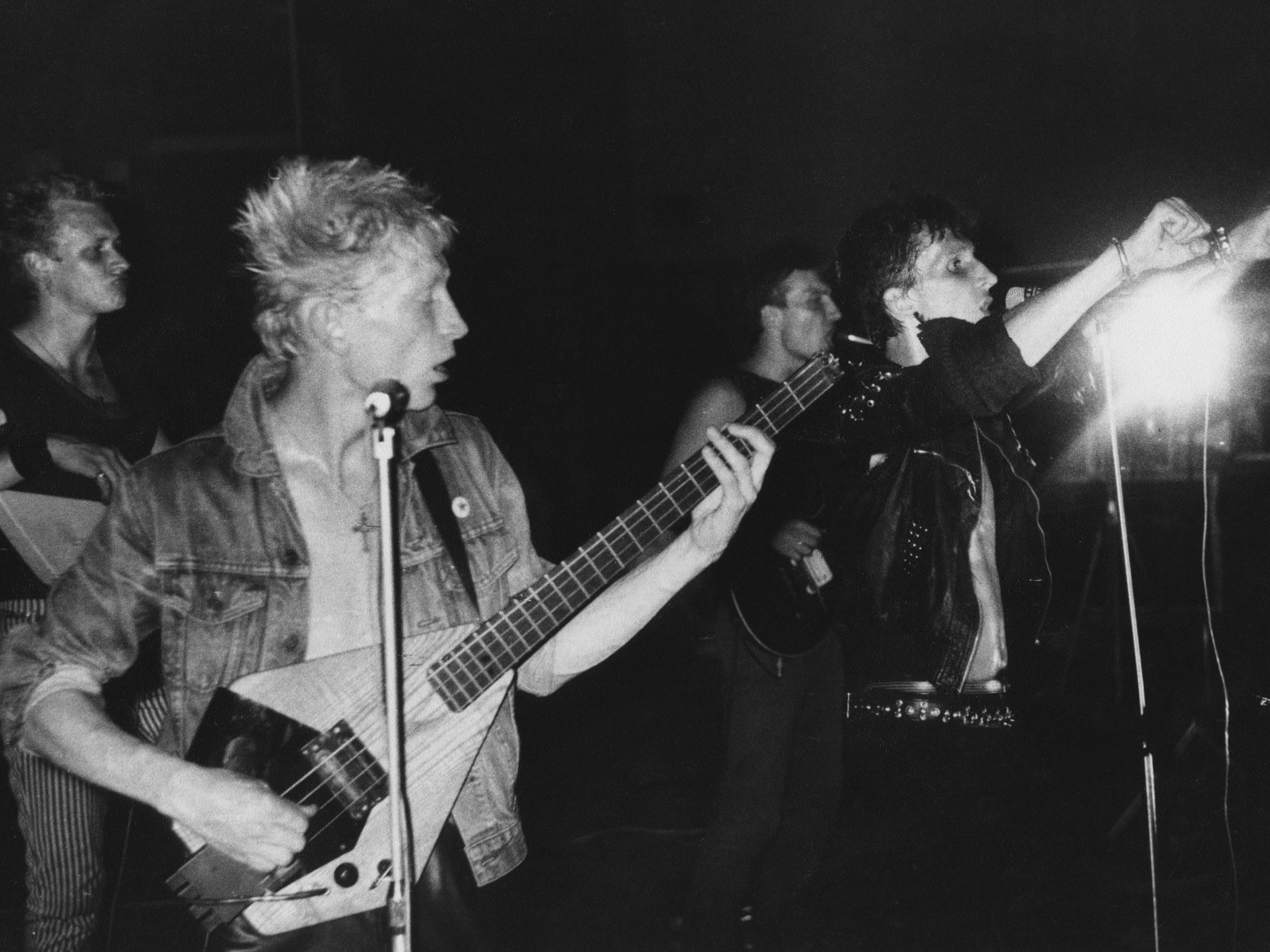
Joanna Stingray/Getty Images
Soviet leaders banned rock ‘n’ roll music in efforts to keep Western culture from “culturally corrupting” Soviet citizens, as reported by Smithsonian Magazine.
Some pushed back on the bans, smuggling Western music into the Soviet Union.
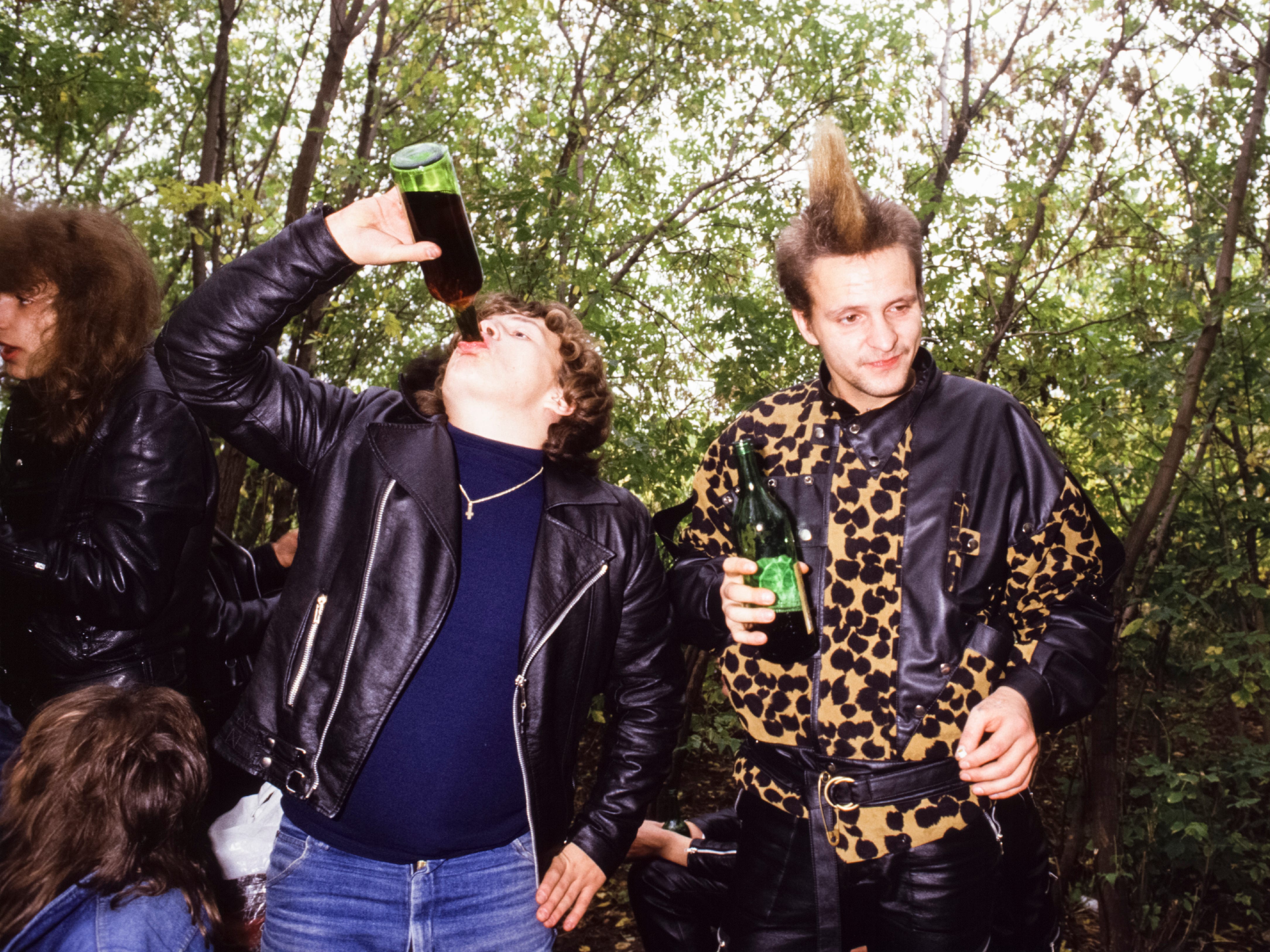
Marc DEVILLE/Gamma-Rapho/Getty Images
“Style hunters” were basically the Soviet version of today’s hipsters. They would listen to smuggled music and dance in hidden discotheques before the police busted them.
Punk subcultures soon became popular.
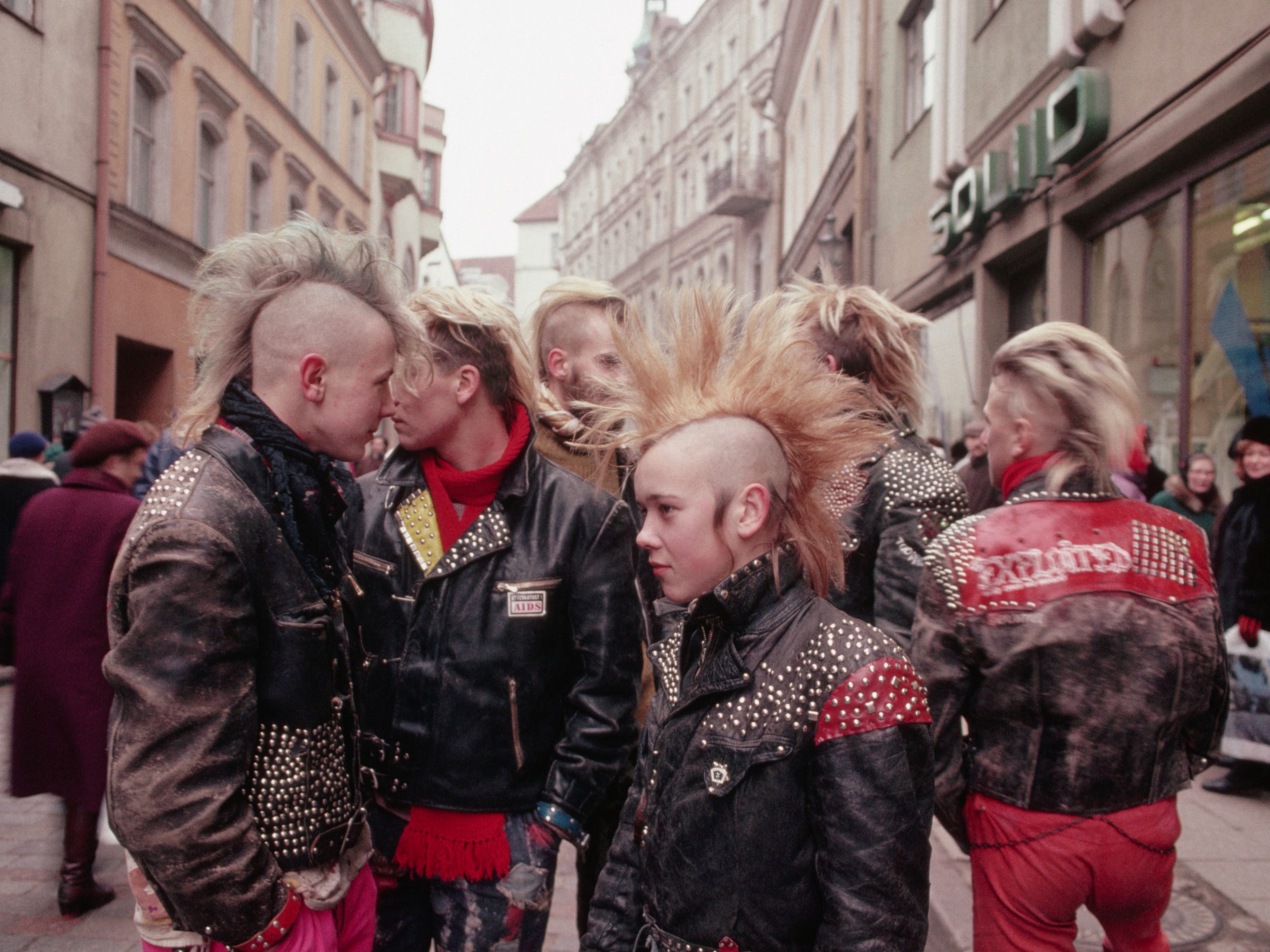
Peter Turnley/Corbis/VCG/Getty Images
Fascination with punk style took the youth by storm, and punks would do anything to get their hands on even just a few seconds of rock ‘n’ roll, as reported by The Guardian.
Methods for smuggling music were innovative and unexpected.
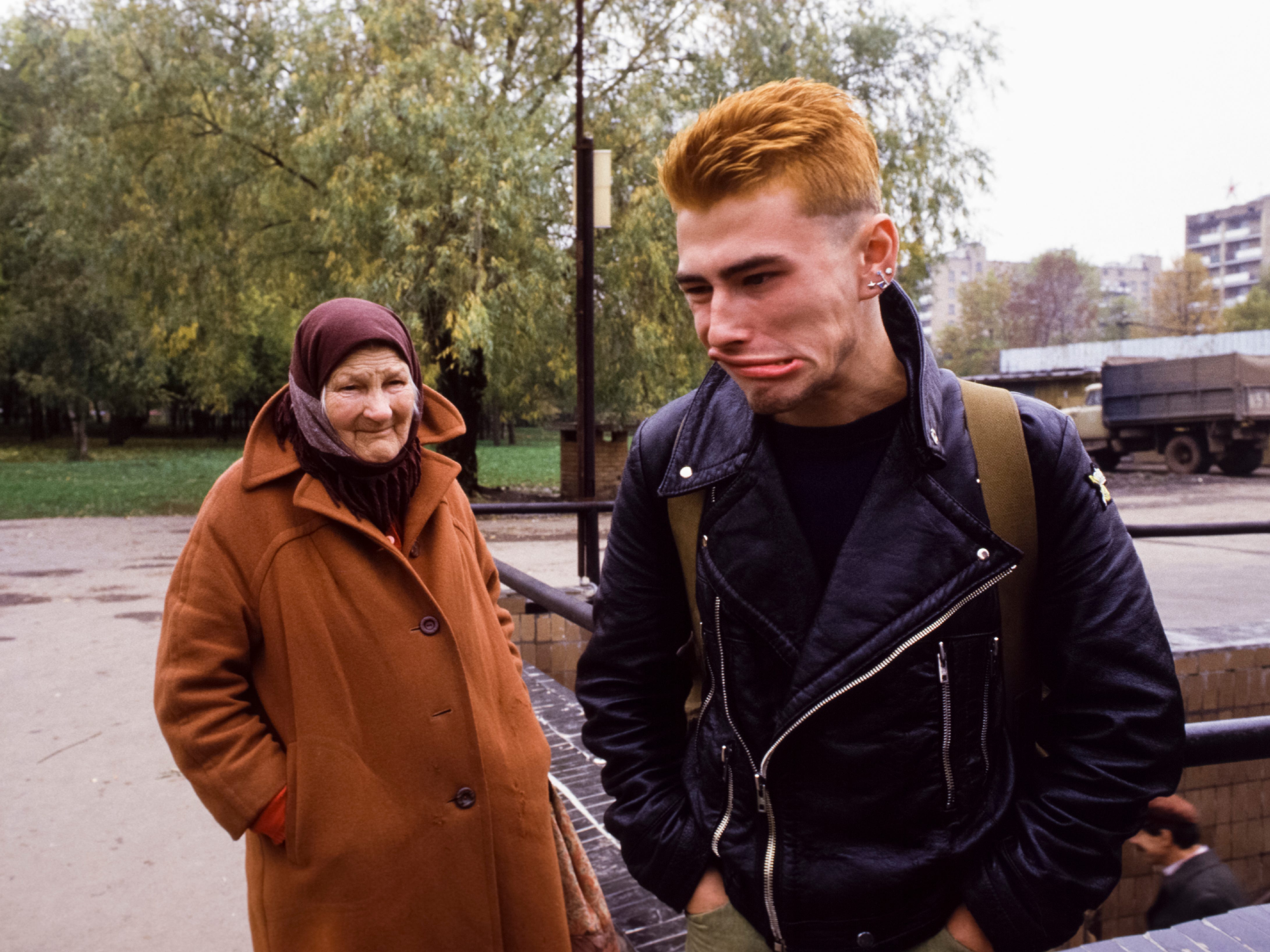
Marc DEVILLE/Gamma-Rapho/Getty Images
In the 1950s, “bone records” were old X-rays printed on flimsy vinyl sheets that were used to share American rock music. The sound quality was awful, but it provided the taste of rebellion they were after.
Sports gained cultural prevalence during the Soviet years.

STAFF/AFP via Getty Images
Sports, and particularly soccer, were popular in the Soviet Union. When the soccer team won the European Championship in 1960, there were huge celebrations.
Soviet leaders used sports teams as tools to establish and maintain cultural control.
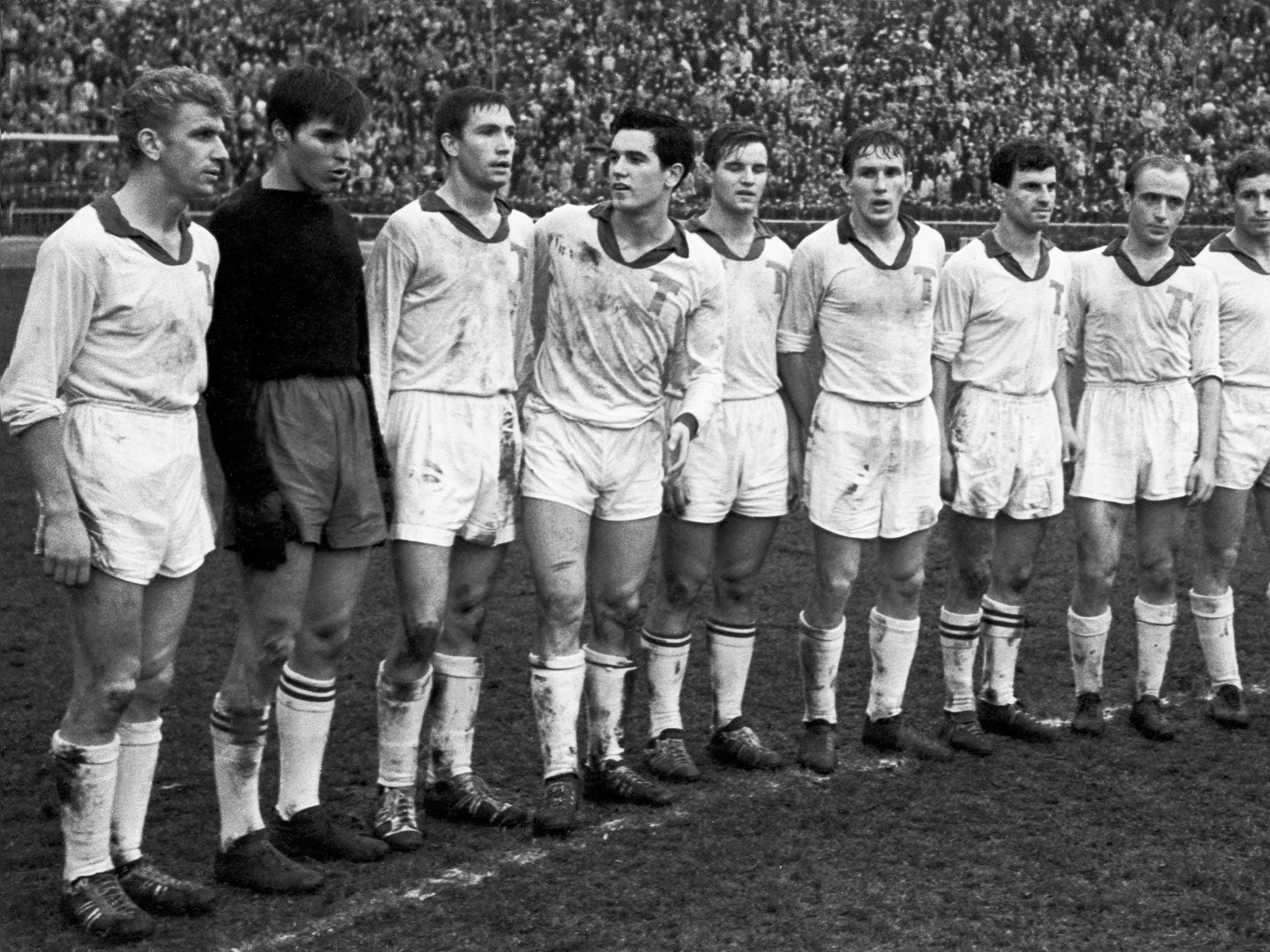
Photo by V. Sychev/TASS/Getty Images
In the earlier years of the Soviet Union, Stalin’s leadership had organized teams as a way for the state to maintain control.
While the government was no longer in complete control by the 1960s, they still used victories as a propaganda tool and claimed success whenever there was a big win.
Older generations pushed back against young people’s embrace of Western culture.
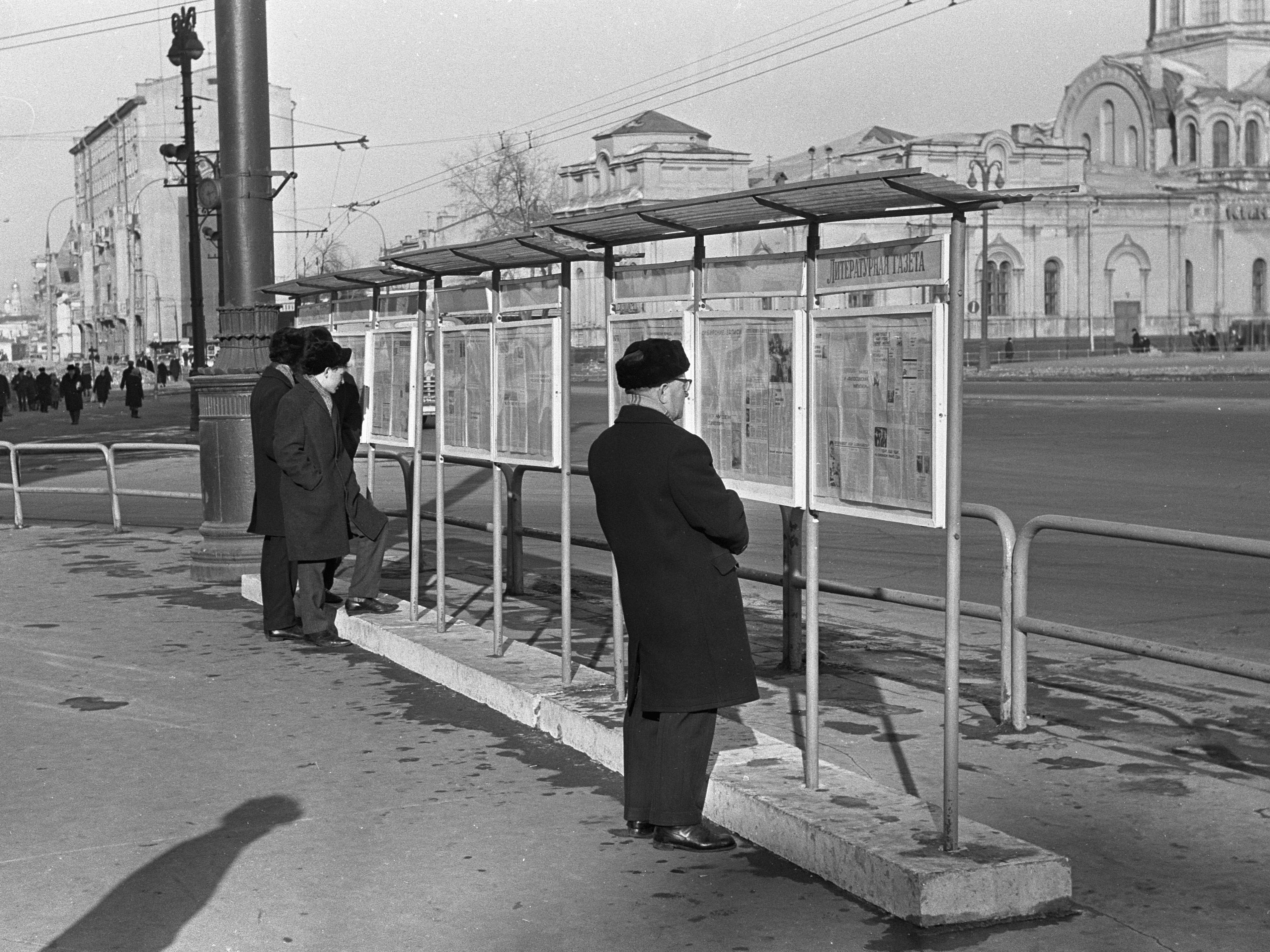
Sepia Times/ Universal Images Group via Getty Images
As younger citizens stirred up trouble, members of the older generation continued to represent Soviet culture and abide by the communist lifestyle.
Well-kept public transport was used as a way to showcase successful socialist governance.

Vitaly Sozinov/TASS/Getty Images
Public transport was a crucial tool to keep the republics connected. The Moscow Metro system was known to be the best-kept to flaunt socialist success, as reported by Foreign Policy Magazine.
While the metro system was seen as a crown jewel of the regime, buses were still more common.
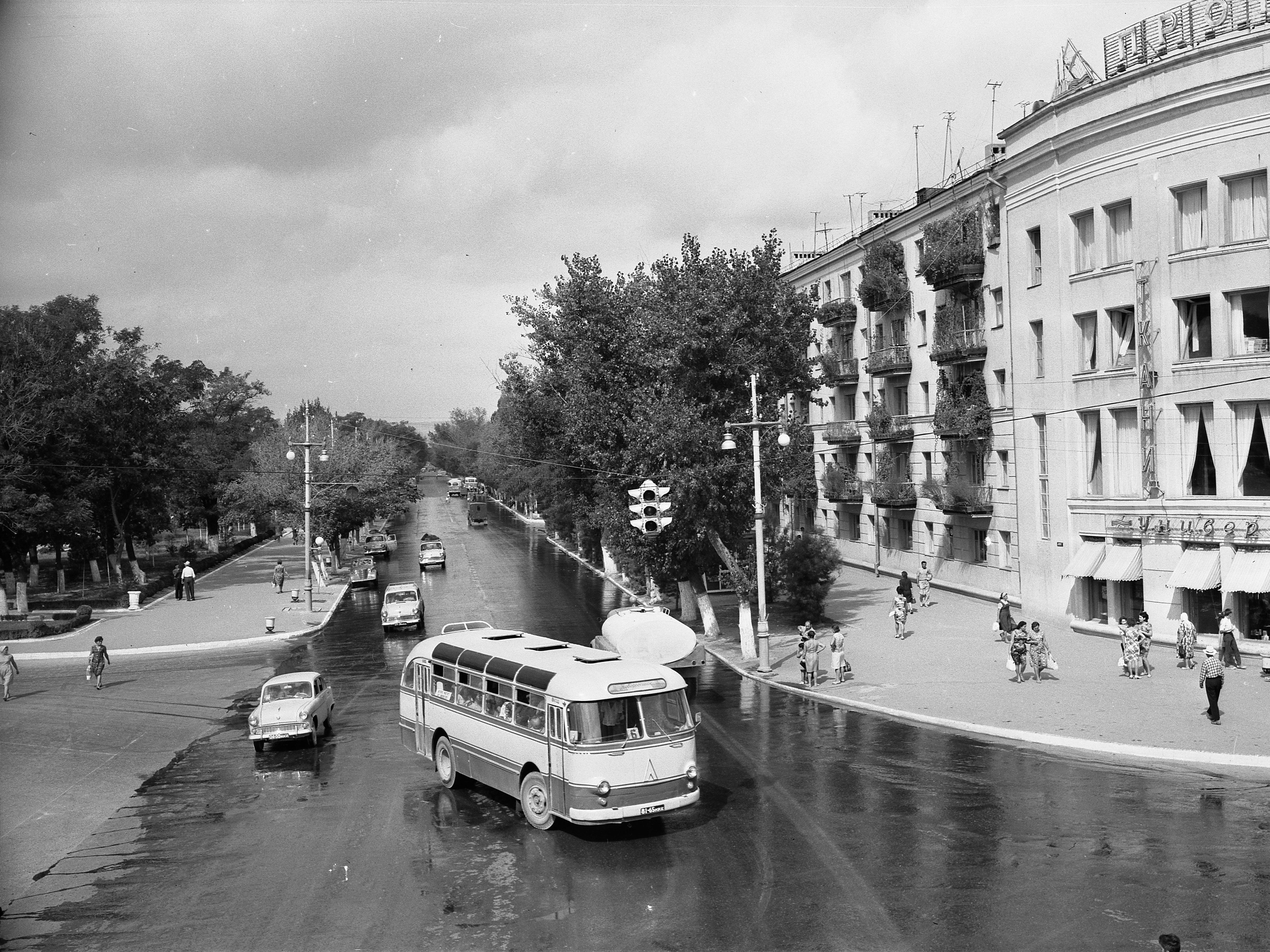
Mark Redkin/FotoSoyuz/Getty Images
Public buses were the predominant means of transportation.
Daily life didn’t look all that different in the Soviet Union.
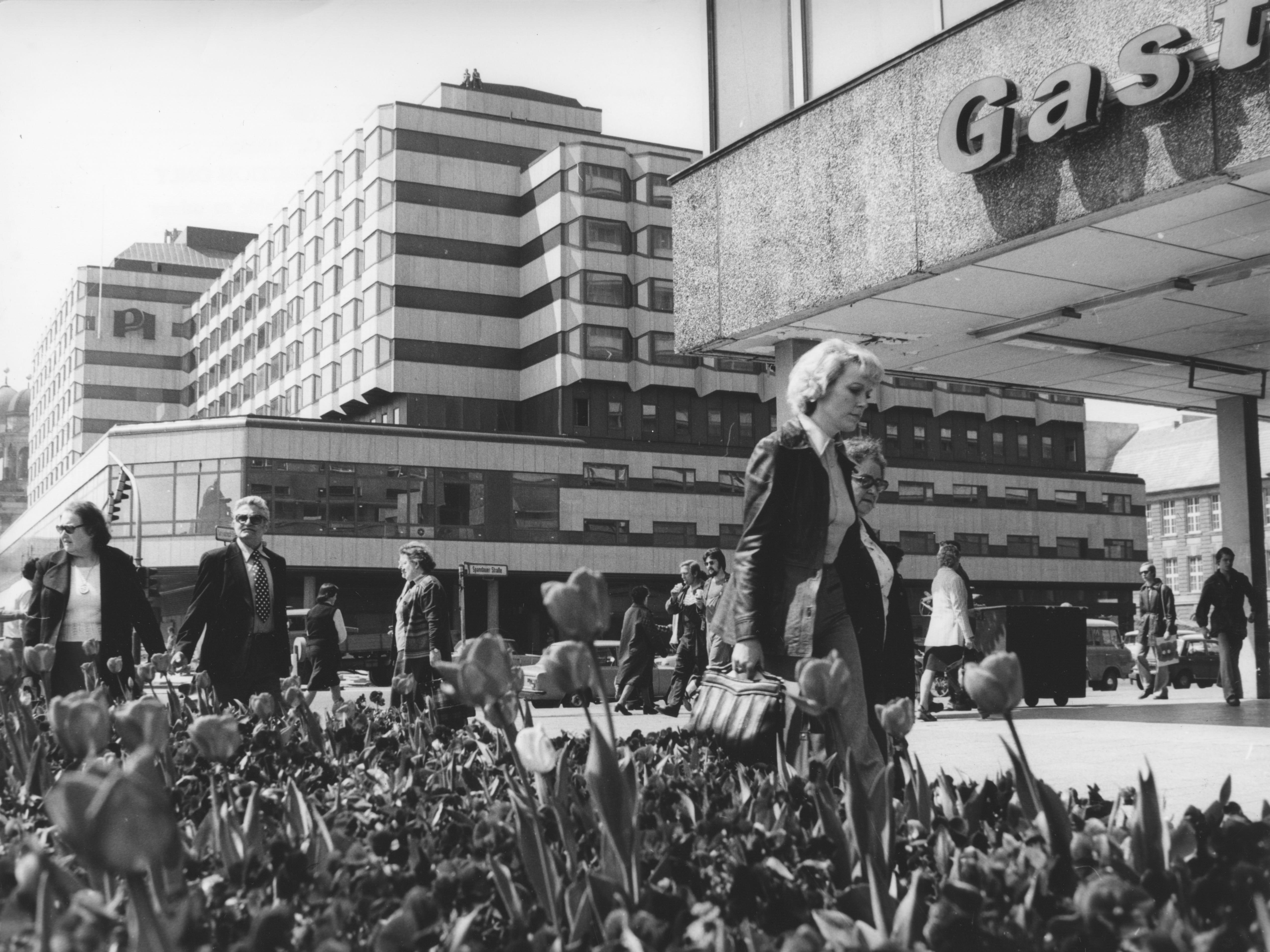
Sovfoto/Universal Images Group/Getty Images
On a normal day, adults would head off to work and occasionally browse a store.
Soviet products, however, looked different from Western ones by design.

Gilbert UZAN/Gamma-Rapho/Getty Images
Photographer David Hlynsky told Fast Company in 2015 that “very few products were branded with anything like the legendary trademarks of the West.”
Stores sold generic products rather than name brands.

James McAnally/Graphic House/Archive Photos/Getty Images
“These were generic products devoid of any accompanying mythology,” Hlynsky told Fast Company.
Supermarkets also looked different from Western ones.
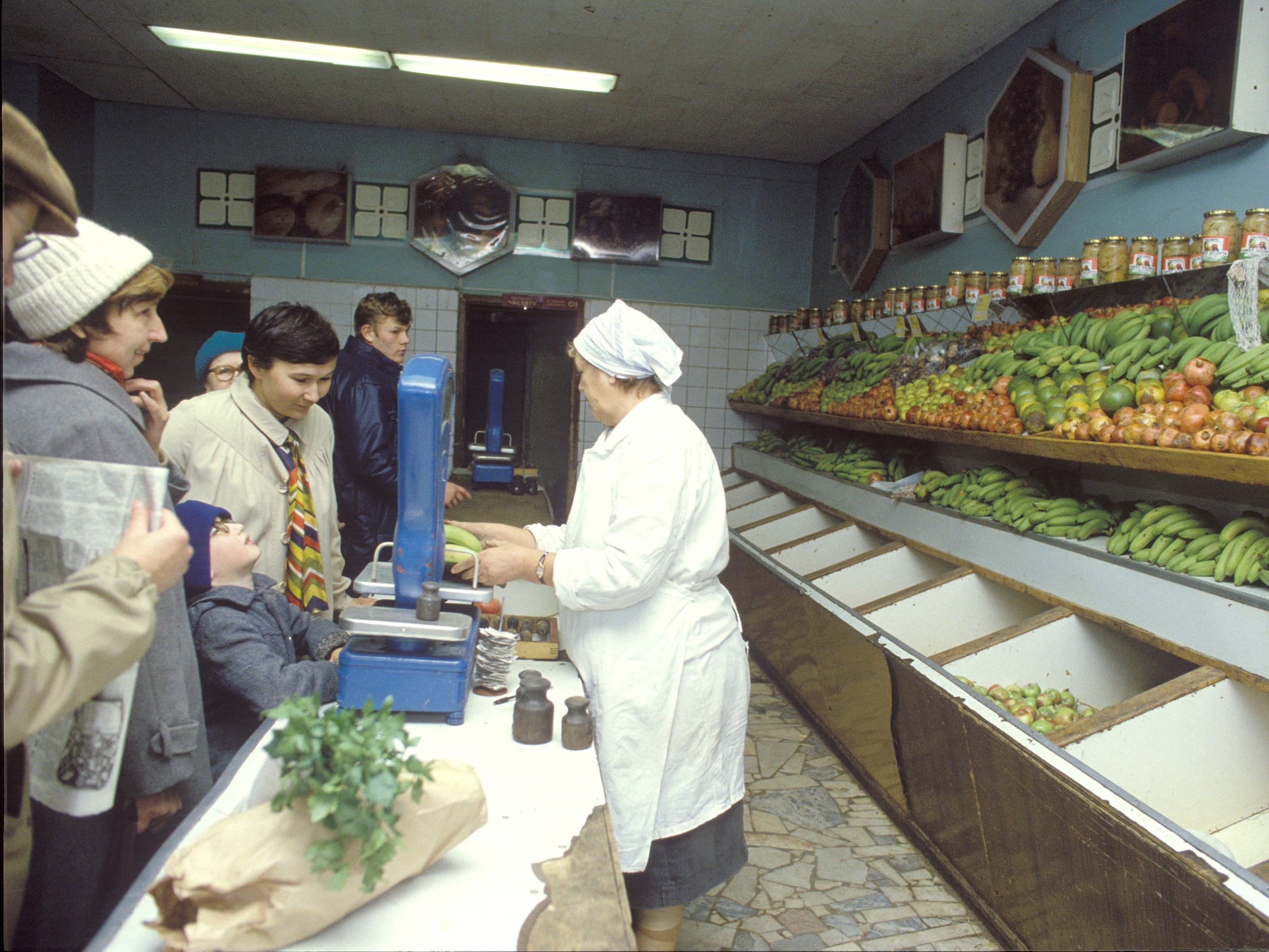
Illustré/RDB/ullstein bild/Getty Images
Nikita Khrushchev, a former Soviet statesman, visited the US in the 1960s and tried to bring the concept of the Western supermarket to the Soviet Union, but it didn’t catch on, Geohistory reported.
While some cities had general supermarkets, they weren’t a popular option.
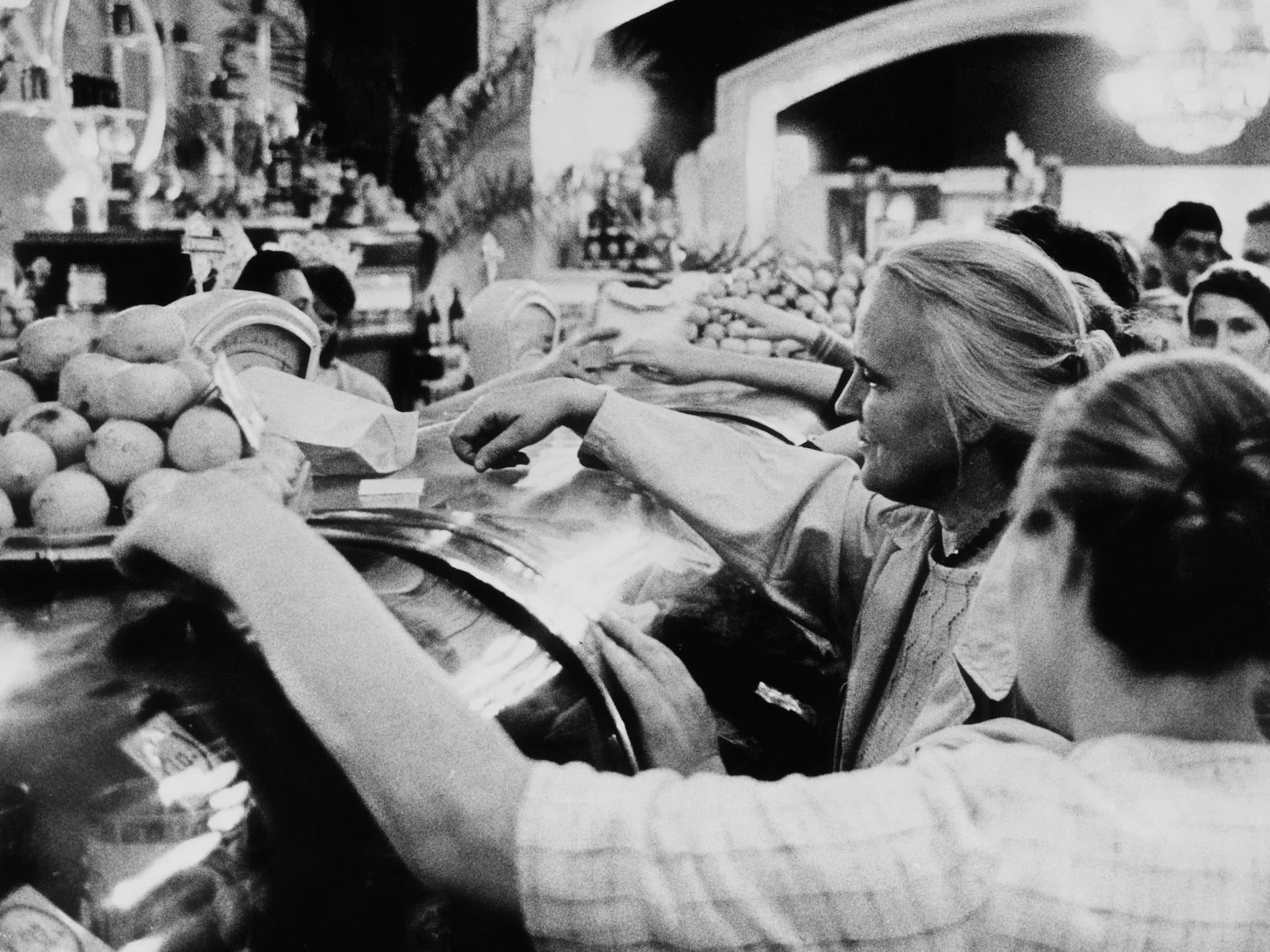
Avalon/Getty Images
The production and distribution systems at these shops just couldn’t keep up with demand, and most Soviet citizens continued to shop at small mom-and-pop stores.
Shopping was minimized during the winter months.
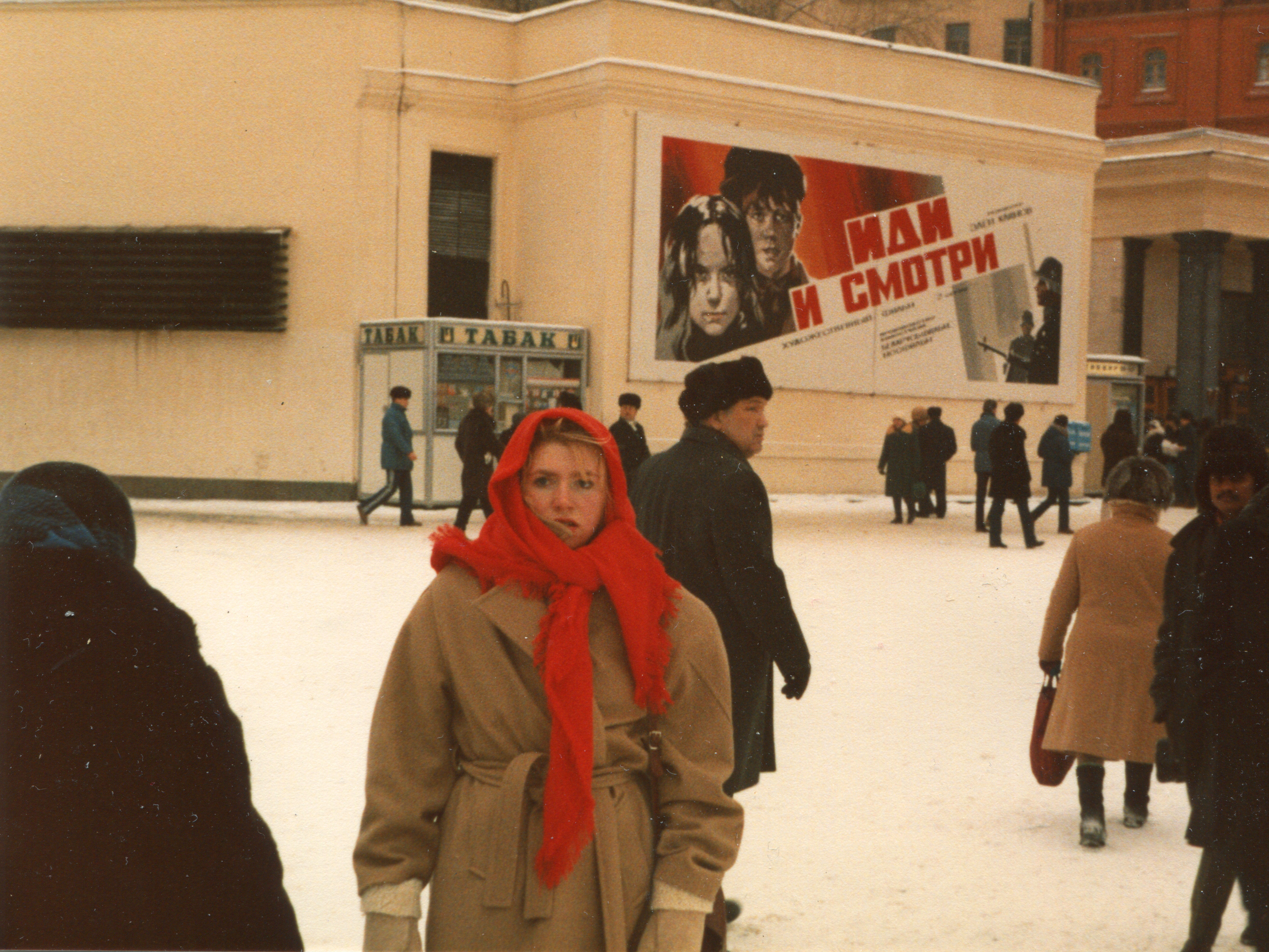
Simon Knott/Getty Images
Winter in Eastern Europe is known for its extremely cold temperatures, making daily commutes and grocery runs even harder.
But summers were a time for communal gatherings in outdoor spaces.

Vladimir Bogdanov/FotoSoyuz/Getty Images
During the summertime, there were trips to beaches, like those along the Black Sea Coast.
Extreme weather didn’t stop military parades.
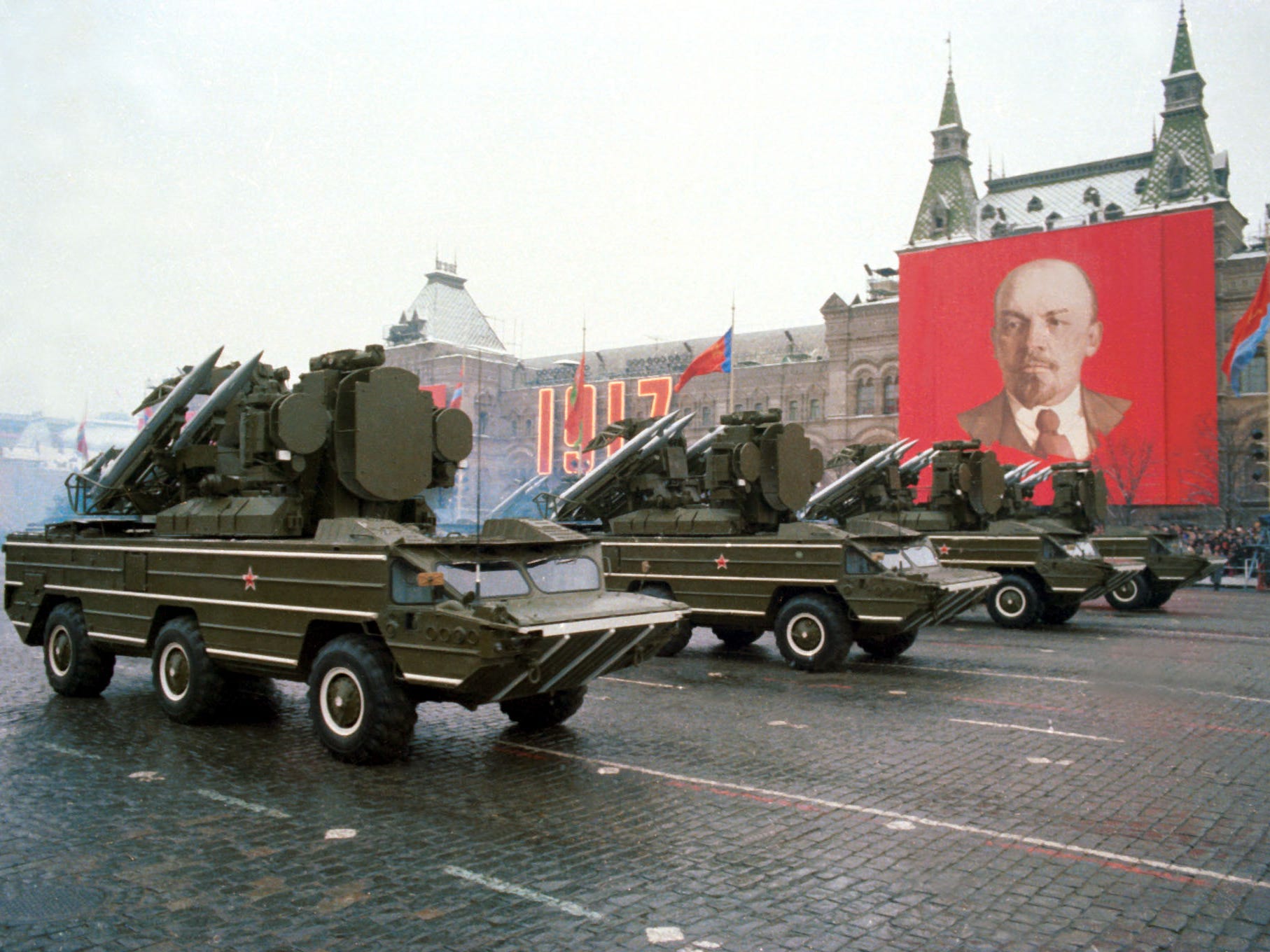
TASS/Getty Images
Even during the harsh winters, the Soviet government put on large displays of military power.
The Soviet Union’s anniversary was celebrated grandly.
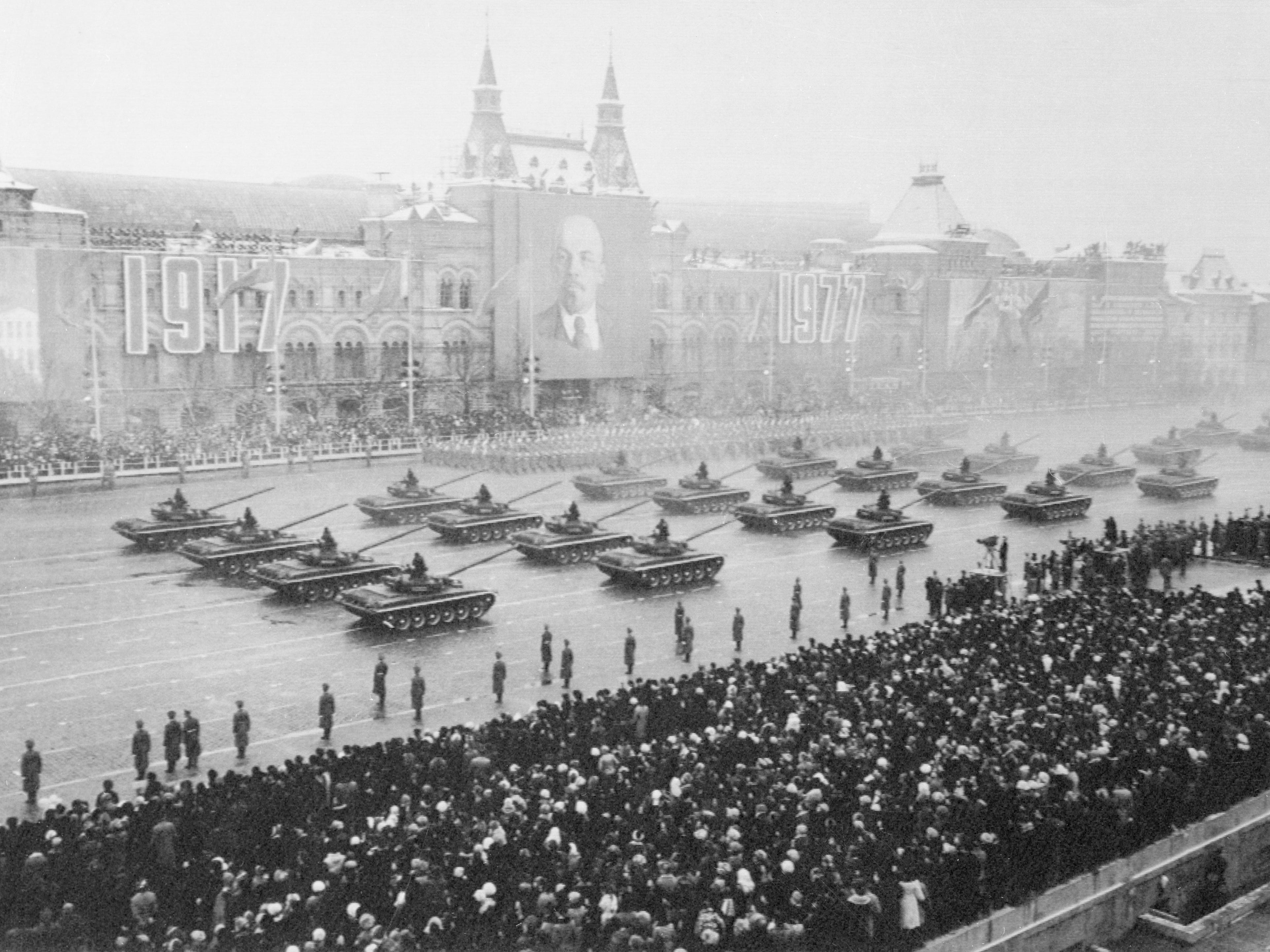
Bettmann/Getty Images
Every November, thousands would gather in below-freezing weather to celebrate the Soviet Union’s anniversary in front of the Red Square.
Missiles were often displayed during these parades.
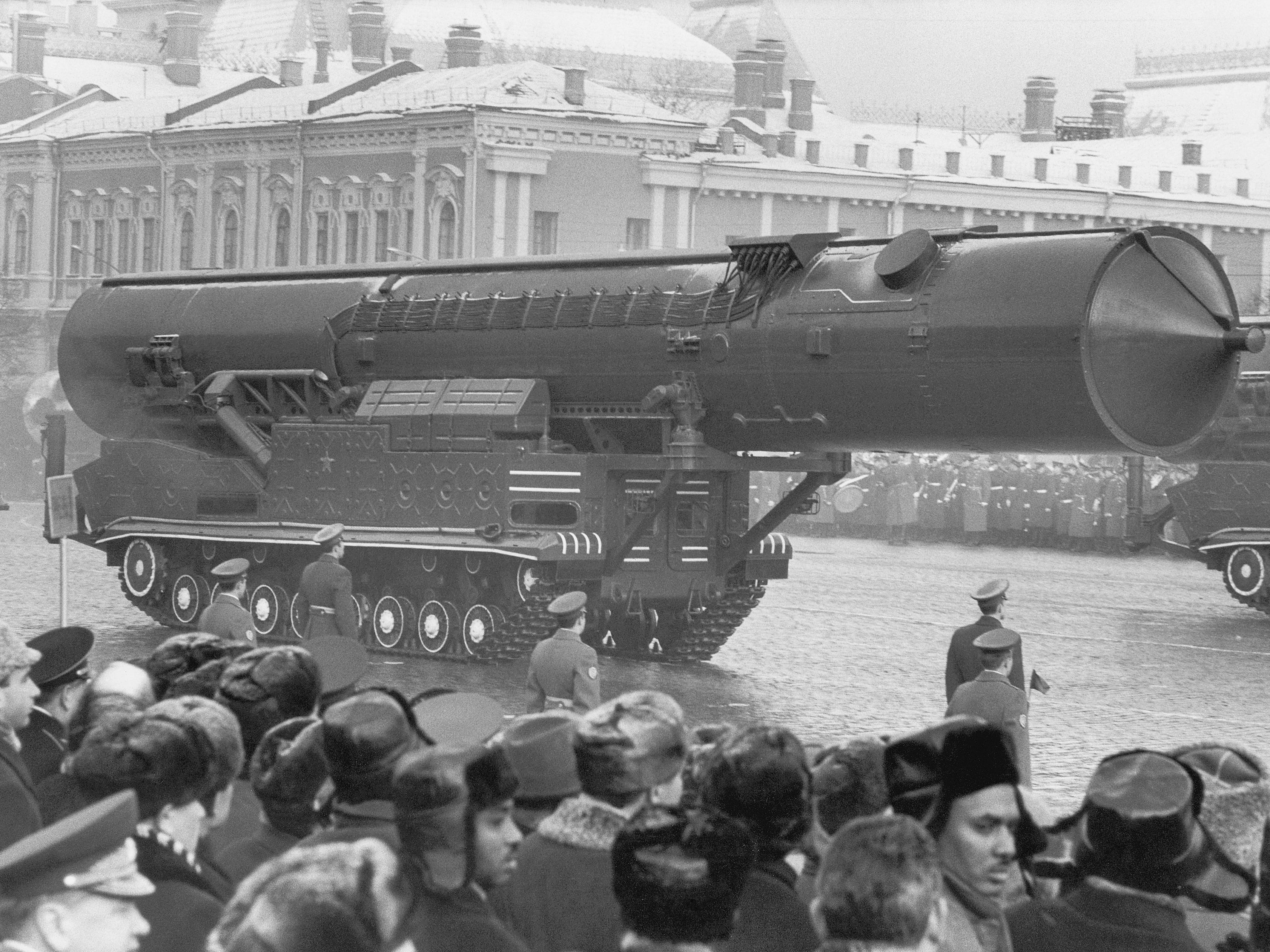
Jerry Cooke/Corbis via Getty Images
Missiles were displayed to show the Soviet Union’s military power and capabilities during the Cold War.
The post Vintage photos show what life looked like behind the Iron Curtain appeared first on Business Insider.
